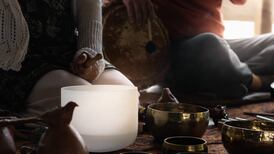The President was not among those attending a book launch in Iveagh House on Wednesday night. He had urgent business elsewhere in Dublin, attending the opposite of a launch – the formal decommissioning as a soccer international of the great Robbie Keane.
But Michael D was at least represented in the book's foreword, which he wrote. And this was apt, because the subject of the volume – Paisanos: The Forgotten Irish Who Changed The Face of Latin America, by Tim Fanning – is one in which the extended Higgins clan played leading roles.
I say “Higgins”, because that was the form by which the most famous of them, Ambrosio O’Higgins, went for most of his life. He only started using the O’ in later years, when its aristocratic implication complemented his new-found status, after one of the most epic social climbs in Irish history.
He was, in general, a late developer. Born in Sligo in 1721, as plain Ambrose Higgins (no relation to the President, as far as I know), he was already 30 before joining the Wild Geese who fled Ireland in those decades for mainland Europe, in this case Spain.
From Spain he travelled to South America, but at 40 still hadn’t found a role there to match his ambition and work ethic. It was only when he became a soldier at 50 that his career really took off.
He had already impressed his Spanish superiors by drawing a detailed map of Chile, noting the positions of mercury, gold, and copper mines, as well as – crucially – the whereabouts of Jesuit missions, whose properties the king was in the process of seizing.
But his exploits as a soldier now propelled him to the very top, at the end of which trajectory he was viceroy of Peru, the “highest ranking colonial office of the Spanish Empire”. In the interim, ironically, he had also found time to have a son – Bernardo – who would in time lead Chile’s fight for independence.
The O’Higginses are among the least forgotten of the Latin American Irish. So is Admiral William Brown, who is well remembered in his native Mayo and has no fewer than four football clubs named after him in Argentina.
But the point of the book’s title is that, compared with our emigrants who distinguished themselves in North America, the ones on the southern continent are neglected.
It's partly a linguistic problem. You tend to need Spanish to read about them. Moreover, in the vernacular of their hosts, they were often given (like Robert Jordan, the American hero of Hemingway's For Whom the Bell Tolls) the all-embracing designation of "inglés".
In reality, Fanning explains, not only did the South American wars of independence feature “a self-styled Hibernian Regiment and Irish Legion, but also the majority of the officers and enlisted men who fought in what became known as the British Legions were Irish”.
Thus the book also reminds us of people like John (aka Juan) Mackenna, a Monaghan man who served the Spanish army before siding with the rebels to become a hero of Chilean independence.
And by way of balance, it features another soldier, Alexander O’Reilly, a Meathman who remained a royalist (in more ways than one) to the end, modernising the Spanish army en route and earning himself the nickname “Bloody O’Reilly”.
But the book is not all about military heroes and villains. The story of Cork-born Eliza Lynch, who fled the Famine as a child and grew up to become the “Paraguayan Evita”, also of course features. As does the rather tragic, and much less well known, tale of Camilla O’Gorman.
Born a few years before Lynch, but in Buenos Aires, O’Gorman was a well-brought up young woman who made the fatal mistake, in her late teens, of falling in love with the family priest, Fr Gutiérrez.
He felt the same way about her. So despite the dangers, they eloped – escaping Buenos Aires under false names and travelling to a remote town where they founded a school and spent six happy months together.
Then an Irish-born priest recognised them and blew the whistle. They were arrested and, without any judicial process, sentenced to death by the Argentinian president, for whom the scandal had become politically embarrassing.
O’Gorman was pregnant by then, but it didn’t save her. The lovers were shot by firing squad in August 1848.
As Fanning adds: “In a grotesque charade of sanctity, a Catholic priest, Father Castellanos, baptised Camilla’s unborn child seconds before her death”.









